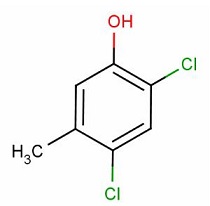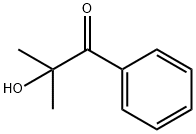2-Hydroxy-2-methylpropiophenone- an effective photoinitiator
Dec 17,2019
2-Hydroxy-2-methylpropiophenone is a photoinitiator.
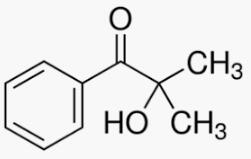
Miezinyte reported[1] that aromatic dithiols, benzene-1,3-dithiol or benzene-1,4-dithiol, were used as cross-linking agents of acrylated epoxidized soybean oil in these systems. Kinetics of photocross-linking was investigated by real-time photorheometry using two different photoinitiators, 2, 2-dimethoxy-2-phenylacetophenone or 2-hydroxy-2-methylpropiophenone, in different quantities. They found that the rate of photocross-linking was higher, more cross-links and shorter polymer chains between cross-linking points of the network were formed when benzene-1,4-dithiol and 2, 2-dimethoxy-2-phenylacetophenone were used in compositions. The higher yield of insoluble fraction, glass transition temperatures and values of compressive modulus were obtained when benzene-1,3-dithiol and 2, 2-dimethoxy-2-phenylacetophenone were used in compositions. This is the first study of acrylated epoxidized soybean oil-based thiol-ene system by real-time photorheometry. The designed novel photocurable systems based on acrylated epoxidized soybean oil and benzenedithiols are promising renewable photoresins for rapid optical 3D printing on demand.
Shin[2] determined diffusion and partition coefficients of 2-hydroxy-2-methylpropiophenone in nanoporous polydimethylsiloxane network and poly(ethylene glycol) diacrylate solution as model precursor solution. They spectroscopically measure average concentration of 2-hydroxy-2-methylpropiophenone in each media, which is compared to the one estimated from one-dimensional diffusion models to obtain diffusion coefficient. Partition coefficient is obtained by measuring saturated concentration of 2-hydroxy-2-methylpropiophenone in each media. Their result enables predicting concentration of 2-hydroxy-2-methylpropiophenone as it diffuses from precursor solution to crosslinked PDMS, which typically occurs when hydrogel is formed inside microfluidic device via photo-polymerization to create nano-structured or micro-structured hydrogel including microfluidic valves.
Wan[3] prepared a new microcrystal muscovite composite superabsorbent was synthesized by UV photopolymerization using 2-hydroxy-2-methylpropiophenone (1 173) as photoinitiator, N, N-methylene bisacrylamide(MBA) as crosslinker, acrylic acid (AA), acrylamide (AM) and sodium 4-styrenesulfonate (SSS) as comonomers. The results show that microcrystal muscovite composite superabsorbent has water absorbency of 550 g/g, salt absorbency of 62 g/g, and water retention of 60% after heating at 70 °C for 40 h. The microcrystal muscovite is physically combined into the polymeric network without destroying its polycrystalline structure and the surface of the microcrystal muscovite composite superabsorbent has some deep and small holes.
In addition, 2-hydroxy-2-methylpropiophenone is an important organic intermediate (building block) to synthetize substituted propiophenone products. For instance, it can be used in the the synthesis of the trifluoromethyl-based thiophosphoro superoxyde, of the trifluoromethyl-based thiophosphoro superoxyde, of a photoinitiator 4' - hydroxy methyl -2 - hydroxy -2 - methyl -1 - phenyl -1 - propyl ketone, and of of oxazolidinone compounds etc.
The following example is about its application on the synthesis of the trifluoromethyl-based thiophosphoro superoxyde [4].

50mL egg-shaped flask was added N - saccharin trifluoromethylthio group (110mg, 0.39mmol), 2- methyl-2-hydroxyphenyl acetone (50.0mg, 0.3mmol), 96μL triethylamine (0.69mmol), two chloride (5 mL), at room temperature for 5min. After completion of the reaction, the reaction solution rapidly by about 6 millimeters silica gel column, the column with the amount of methylene chloride and washed twice, and the combined organic liquid, spin dry to give trifluoromethyl - (2-benzoyl) isopropyl thio peroxide (72mg, 90 percent isolated yield).
References
1.Miezinyte G, Ostrauskaite J, Rainosalo E, Skliutas E, alinauskas M. Photoresins based on acrylated epoxidized soybean oil and benzenedithiols for optical 3D printing[J]. Rapid Prototyping Journal, 2019, 25(2): 378 – 387
2.Shin K, Yu H, Kim J. Determination of diffusion coefficient and partition coefficient of photoinitiator 2-hydroxy-2-methylpropiophenone in nanoporous polydimethylsiloxane network and aqueous poly(ethylene glycol) diacrylate solution[J]. Journal of Industrial and Engineering Chemistry, 2017, 56:443 – 449.
3.Wan T, Liao L, Huang R, Wu D, Tang L, Xiong J, Chen Q. Synthesis and swelling behaviors of microcrystal muscovite composite superabsorbent by photopolymerization[J]. Journal Wuhan University of Technology, Materials Science Edition, 2016, 31(1):151 – 156.
4.Shanghai Institute of Organic Chemistry, Chinese Academy of Sciences. Chen Q, Xu C. The trifluoromethyl-based thiophosphoro superoxyde and its preparation method (by machine translation). CN104945298[P], 2016, B, Location in patent: Paragraph 0140; 0141; 0142; 0143
- Related articles
- Related Qustion
- Palladium-Catalyzed Reaction of 2-Hydroxy-2-methylpropiophenone with Aryl Bromides Jan 26, 2024
Palladium-catalyzed reaction of 2-hydroxy-2-methylpropiophenone undergoes successive multiple arylation, with potential for selective synthesis using different aryl bromides and ligands.
- 2-Hydroxy-2-methylpropiophenone: properties and applications Aug 29, 2023
2-Hydroxy-2-methylpropiophenone is a versatile compound with applications in UV spectroscopy, organic synthesis, photopolymerization, and UV-curable systems.
m-Cresol is a methylphenol compound, which is naturally occurring or synthetic, and can be used as cosmetic biocides/preservatives in cosmetics. m-Cresol function as both a preservative and fragrance ingredient.....
Dec 17,2019Organic Raw MaterialSulforaphane (SFN) is an anti-cancer, anti-microbial and anti-diabetic compound found in cruciferous vegetables. It induces the production of detoxifying enzymes such as quinone reductase and glutathione S-transferase.....
Dec 17,2019Plant extracts2-Hydroxy-2-methylpropiophenone
7473-98-5You may like
- polypropylene vs polycarbonate
Mar 18, 2024
- What is sodium chlorite used for?
Mar 16, 2024
- What is chlorine dioxide used for?
Mar 16, 2024
2-Hydroxy-2-methylpropiophenone manufacturers
- 2-Hydroxy-2-methylpropiophenone
-
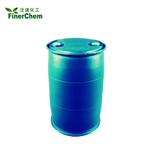
- $0.00 / 200Kg/Drum
- 2024-04-25
- CAS:7473-98-5
- Min. Order: 1KG
- Purity: 99%
- Supply Ability: 200mt
- 2-Hydroxy-2-methylpropiophenone
-
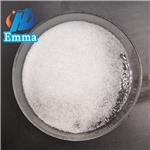
- $100.00 / 1kg
- 2024-04-19
- CAS:7473-98-5
- Min. Order: 1kg
- Purity: 99.93%
- Supply Ability: 1000kg per week
- 2-Hydroxy-2-methylpropiophenone
-
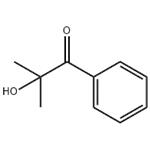
- $5.00 / 1KG
- 2024-01-14
- CAS:7473-98-5
- Min. Order: 1KG
- Purity: 99%
- Supply Ability: g-kg-tons, free sample is available




